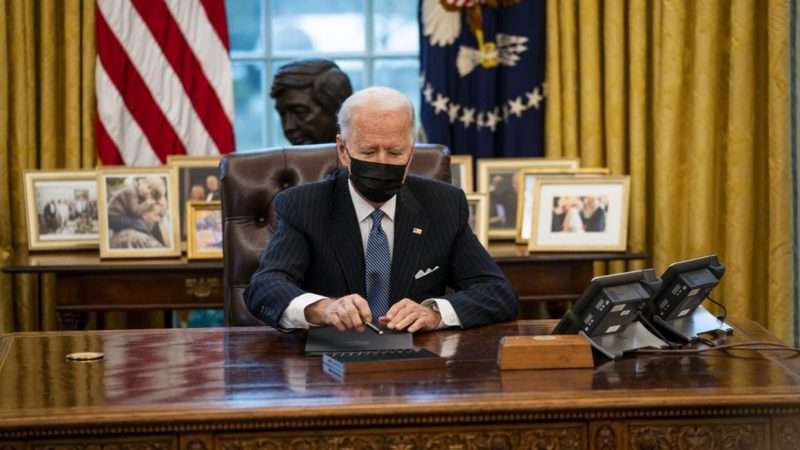In Dawson v. Merck & Co., Inc., decided Monday by Magistrate Judge Peggy Kuo (E.D.N.Y.), Reuters sought to unseal exhibits accompanying a Nov. 2017 Daubert evidentiary motion filed in a drug liability lawsuit (related to Propecia); the lawsuit had been settled in Sept. 2018, and Reuters asked to unseal the document in Sept. 2019.
The court concluded that the documents were presumptively supposed to be open, because they were related to a summary judgment motion; and the court concluded that the settlement didn’t change that. Here’s the key passage:
Once filed on the docket, the presumption of access attaches to a document and does not disappear. To conclude otherwise would permit the parties in a case to summarily close the curtain on the public’s view into the judicial branch of government without the court’s ability to weigh the presumption of access against any countervailing interests. The continuing presumption of access allows the public to see what is going into the sausage factory, even if a particular sausage is never made.
For watchdogs who focus not on the immediate news of the day but take a longer view of the judicial process, the Court’s ruling alleviates the need to constantly monitor docket filings in real-time and race to make requests to unseal before the parties settle. Reuters claims to be in such a situation, as it seeks information in the Documents for reporting not only on Propecia but also the role that courts have played in the course of the years-long nationwide litigation concerning the drug. (See Reuters Article “Court let Merck hide secrets about a popular drug’s risks.”)
Even in a fast-moving world, a presumptive right to access should not be fleeting, lasting only as long as the parties wish it to exist. The disappearance of a case or controversy for the court to decide does not mean that its existence at some point and the parties’ conduct of that dispute are no longer newsworthy.
And the broader discussion:
Defendants … argue that because the case had already settled, the court could no longer render any decision on the motion for which the Documents were filed, and the Documents cannot be judicial documents. Defendants rely heavily on Giuffre v. Maxwell, No. 15-CV-7433 (LAP), 2020 WL 133570 (S.D.N.Y. Jan. 13, 2020), reconsideration denied, 2020 WL 917057 (S.D.N.Y. Feb. 26, 2020). The district court in Giuffre held that documents filed in support of undecided motions in a settled case were not judicial documents. The court reasoned that “[t]he essence of the judicial power is … adjudicative” and because the case had settled by the time the motion to unseal was filed, “[a]ll disputes regarding the underlying merits of the action have been rendered moot by the settlement.” Lacking “clear guidance from the Court of Appeals,” the court in Giuffre “cho[se] the path that adheres most closely to the overarching purpose of the presumption of public access. That is, the presumption exists to monitor judicial decision-making.” It concluded that, “[w]ith respect to motions left undecided by [the district judge], there was never, and now never can be, a judicial decision-making process that would trigger the public’s right to access the undecided motions and the documents relevant to them.” The court accordingly found that the motion papers were not judicial documents and denied the request to unseal them.
Reuters argues that Giuffre is contrary to “well-established Second Circuit precedent,” and that “[t]he documents attached to the parties’ Daubert briefing were ‘judicial documents’ at the moment they were filed with this Court, and they did not lose this status merely because the case settled without a decision on the motion.” Ruling otherwise “would lead to the absurd result that a media organization that intervenes prior to settlement would be entitled to a First Amendment presumption of access, while the same entity, seeking the exact same documents, would be entitled to a lesser presumption after the case has settled.”
While the Second Circuit has not expressly addressed the precise timing question here—whether documents filed in connection with an undecided motion retain their status as judicial documents after the parties settle the case—it has held that a “presumption of immediate public access attaches…” upon filing of a judicial document. Thus, the Court has held that a judicial decision is not a prerequisite to finding a presumptive right of public access.
The Second Circuit has also found that a complaint remains a judicial document after settlement even if it was not the subject of a judicial opinion. In support of that conclusion, the Second Circuit reasoned that, “[e]ven in the settlement context, the inspection of pleadings allows ‘the public [to] discern the prevalence of certain types of cases, the nature of the parties to particular kinds of actions, information about the settlement rates in different areas of law, and the types of materials that are likely to be sealed.'” These insights into the judicial process are essential to the public’s understanding of, and ability to monitor, the functioning of the judiciary, even though no actual or potential judicial decision-making is involved.
Although documents in connection with motions are not as central to a case as pleadings, the factors the Second Circuit … identified as favoring the post-settlement survival of the presumption of access for pleadings apply with similar force to motions.
Here, the parties invoked the court’s decision-making authority to adjudicate the Daubert Motion, and Plaintiff filed the Documents in an attempt to persuade the court of his position. “Simply because the parties later filed a stipulation of dismissal does not mean that the parties did not invoke the judicial power upon the initial filing of these documents.”
Once filed on the docket, the presumption of access attaches to a document and does not disappear. To conclude otherwise would permit the parties in a case to summarily close the curtain on the public’s view into the judicial branch of government without the court’s ability to weigh the presumption of access against any countervailing interests. The continuing presumption of access allows the public to see what is going into the sausage factory, even if a particular sausage is never made.
For watchdogs who focus not on the immediate news of the day but take a longer view of the judicial process, the Court’s ruling alleviates the need to constantly monitor docket filings in real-time and race to make requests to unseal before the parties settle. Reuters claims to be in such a situation, as it seeks information in the Documents for reporting not only on Propecia but also the role that courts have played in the course of the years-long nationwide litigation concerning the drug. (See Reuters Article “Court let Merck hide secrets about a popular drug’s risks.”)
Even in a fast-moving world, a presumptive right to access should not be fleeting, lasting only as long as the parties wish it to exist. The disappearance of a case or controversy for the court to decide does not mean that its existence at some point and the parties’ conduct of that dispute are no longer newsworthy.
Accordingly, the Court finds that the Documents are judicial documents to which a presumption of access immediately attached and remains attached notwithstanding settlement by the parties.
The court then concluded that there was no basis for the documents to remain sealed, despite the defendants’ claims that they contained confidential business information.
from Latest – Reason.com https://ift.tt/3cbqewg
via IFTTT


